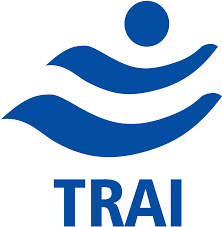TRAI’s June 2025 Drive Test in UP (West) Reveals Mixed Network Performance
The drive test, managed by the TRAI Regional Office in Delhi, evaluated network capabilities across 2G, 3G, 4G, and 5G technologies, aiming to reflect the true end-user experience across cities and highways.

- Country:
- India
The Telecom Regulatory Authority of India (TRAI) has released the results of its Independent Drive Test (IDT) for the Uttar Pradesh (West) Licensed Service Area (LSA), offering a granular view into the performance of voice and data services across major telecom service providers (TSPs) in the region. Conducted over three days from June 2 to June 4, 2025, the exercise covered various urban and semi-urban scenarios—critical zones for assessing quality of service (QoS) in real-world conditions.
The drive test, managed by the TRAI Regional Office in Delhi, evaluated network capabilities across 2G, 3G, 4G, and 5G technologies, aiming to reflect the true end-user experience across cities and highways.
Extensive Coverage Across Multiple Test Environments
The IDT spanned a total of 216.2 km of city roads and 64.9 km of highways, along with 9 high-traffic hotspots such as institutional hubs and public transport junctions. Inter-operator calling was tested at two specific locations, capturing scenarios where calls are made across different telecom networks.
This wide-ranging test was designed to gauge mobile service performance in four distinct environments:
-
Urban Zones
-
Institutional Hotspots
-
Public Transport Hubs
-
High-Speed Travel Corridors
Technologies and Metrics Evaluated
TRAI’s drive test assessed mobile networks using both legacy and emerging technologies—from 2G to 5G—to ensure inclusivity for all types of mobile users, regardless of handset capabilities.
The parameters were divided into two major categories:
Voice Service Metrics:
-
Call Setup Success Rate (CSSR)
-
Call Drop Rate (DCR)
-
Call Setup Time
-
Call Silence Rate
-
Speech Quality (Mean Opinion Score - MOS)
-
Signal Coverage
Data Service Metrics:
-
Download and Upload Throughput
-
Latency
-
Jitter
-
Packet Drop Rate
-
Video Streaming Delay
Operator-wise Voice Performance in Meerut
In Meerut, a key urban center in the LSA, TRAI evaluated eight key performance indicators. Here are the findings in Auto Network Selection Mode (5G/4G/3G/2G):
-
Call Setup Success Rate (CSSR):
-
RJIL (Reliance Jio): 100.00%
-
VIL (Vodafone Idea): 89.59%
-
BSNL: 86.57%
-
Airtel: 86.39%
-
-
Drop Call Rate (DCR):
-
RJIL: 0.00%
-
VIL: 0.20%
-
Airtel: 0.23%
-
BSNL: 3.45%
-
While Reliance Jio emerged as the most consistent performer with a perfect call setup success rate and zero call drops, BSNL’s high drop call rate of 3.45% and relatively lower CSSR indicate areas for urgent improvement.
Airtel acknowledged performance issues, stating that the Call Setup Time (CST) was higher than desirable and the CSSR was adversely impacted due to the Pre-Call Announcement (PCA) mandated by the Department of Telecommunications (DoT) for customer awareness.
5G Performance Highlights
TRAI’s tests also highlighted encouraging trends in 5G services, especially in urban hotspots. Key observations include:
-
Peak Download Speed: 283.25 Mbps
-
Peak Upload Speed: 58.82 Mbps
These figures mark a positive evolution in India’s mobile broadband experience, validating the increasing adoption of 5G across major cities in UP (West). The network improvements in throughput and latency will likely boost digital engagement in areas like online education, telemedicine, and e-governance.
Implications for Consumers and Operators
The findings from the drive test offer a valuable reference for consumers evaluating their telecom options and for operators seeking to improve network performance. TRAI has already shared the IDT results with all participating TSPs, prompting them to take corrective actions wherever necessary.
Road Ahead for Better QoS
The June 2025 IDT marks another step forward in TRAI’s mission to ensure transparency, accountability, and quality in India’s telecom landscape. While the performance of 5G services and some TSPs like RJIL has been commendable, there remain disparities, especially in voice call reliability and rural coverage. Going forward, such independent evaluations will play a pivotal role in guiding infrastructure investments and policy decisions, as India continues to expand its digital footprint.










